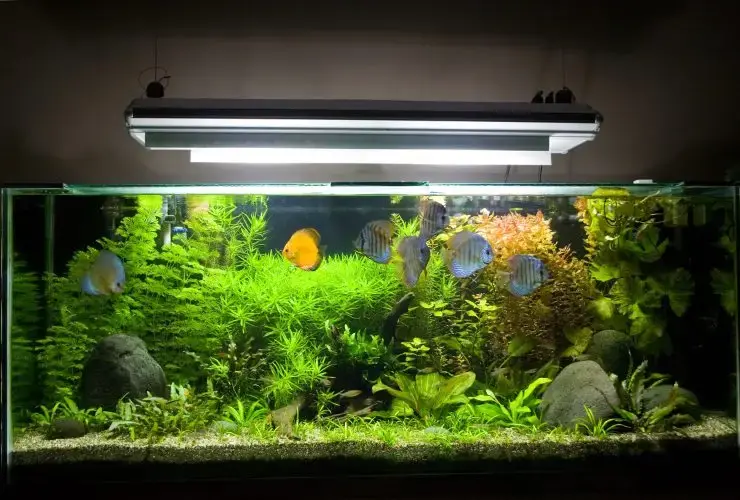
When starting out in the aquarium hobby, one of the first—and most important—decisions you’ll make is choosing the right tank size. It might be tempting to go small and simple, but your tank size can seriously impact the health of your fish, how easy it is to maintain, and your long-term enjoyment of the hobby. So, before you buy that shiny 5-gallon (19-litre) starter kit, let’s break down everything you need to know about picking the perfect aquarium size.
Why Tank Size Matters More Than You Think
The size of your tank isn’t just about how many fish you can fit inside—it affects water quality, maintenance, fish behaviour, and your overall success as an aquarist. A tank that’s too small is harder to keep stable, which means more frequent cleaning and a higher chance of fish stress or even death. On the other hand, a larger tank gives you more room for error and allows fish to thrive in a more natural, stress-free environment.
Bigger Is (Usually) Better for Beginners
Contrary to what many people assume, smaller tanks are not easier to manage. Smaller volumes of water are more sensitive to changes in temperature, ammonia, ph, and other water parameters. That means one small mistake, like overfeeding or missing a water change, can have big consequences.
A 20- to 30-gallon (75–115-litre) tank is ideal for most beginners. It offers a good balance between size and manageability. You’ll have more space for fish, plants, and decor while still being able to fit the tank comfortably in most homes. It also allows you to set up a proper filter, heater, and lighting system.
How to Choose Based on Your Fish
Different fish need different amounts of space. Some stay small and can do well in nano tanks, while others grow large or need more swimming room. Here’s a general rule of thumb: 1 inch of fish per gallon of water (2.5 cm per litre). But keep in mind that this is a rough estimate and doesn’t apply to all species, especially larger or messier fish like goldfish and cichlids.
Always research the adult size, activity level, and temperament of the fish you want to keep. For example, bettas can do fine in a 5-gallon (19-litre) tank, but schooling fish like neon tetras or danios need space to swim in groups, so a 10- to 20-gallon (38–75-litre) tank is a better fit. If you’re dreaming of a community tank with several species, aim for 29 gallons (110 litres) or more.
Thinking About Future Growth
A common beginner mistake is buying a small tank and quickly outgrowing it. Once you realise how enjoyable fishkeeping is, you might want more fish, more plants, or a bigger aquascape. Upgrading later means more costs and more work, so it’s smart to think ahead. If space and budget allow, go a little bigger than you think you need—it’ll give you flexibility and save you stress down the road.
Tank Dimensions and Placement
Tank size isn’t just about gallons or litres—it’s also about shape and where it’ll go. A long, shallow tank provides more surface area and swimming space than a tall, narrow one, even if they hold the same amount of water. Always measure the area where you plan to place your tank. Make sure it’s level, sturdy, and away from direct sunlight or drafts, which can affect temperature and algae growth.
Don’t Forget Equipment Size and Weight
Larger tanks require stronger filters, more substrate, and bigger heaters. Plus, water is heavy—one gallon (3.8 litres) weighs about 8.3 pounds (3.8 kg). A fully set-up 29-gallon (110-litre) tank can weigh over 300 pounds (136 kg). Make sure your stand or furniture can handle the weight. Some beginners choose tanks between 10 to 20 gallons (38–75 litres) for this reason: manageable size, affordable equipment, and less strain on their home setup.
Best Tank Sizes for Different Experience Levels
5–10 gallons (19–38 litres): Good for a single betta or shrimp/snail setups. Not ideal for complete beginners unless you're keeping just one or two hardy fish.
10–20 gallons (38–75 litres): Great for small fish communities like guppies, tetras, or danios. Still compact, but more stable water parameters.
20–30 gallons (75–115 litres): The sweet spot for most beginners. You can keep more fish and build a beautiful aquascape without too much maintenance.
40+ gallons (150+ litres): Ideal for larger or more active fish and for long-term growth in the hobby. Requires more space and budget, but is very rewarding.
Final Thoughts
Picking the right tank size is one of the smartest things you can do as a beginner. Start with a size that gives your fish room to live comfortably and gives you enough wiggle room to learn the ropes without stressing over every little change in water quality. Go a bit bigger if you can—it’ll make your life easier and your fish healthier. Once your tank is set up right, you’ll enjoy the hobby so much more.
